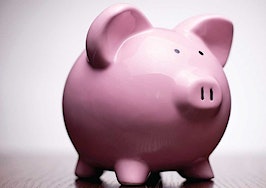- PropertyShark and RentCafé's latest report revealed a housing gender gap in 9 cities -- meaning men can afford to buy a starter home in these cities while women cannot.
- In these metros, women make 70 to 73 cents on the dollar.
- There are 14 cities where singles, no matter their gender, can't afford to buy.
Low inventory and lack of access to affordable housing has been a common theme in real estate over the past year, and according to a new study by PropertyShark, single women looking to buy are disproportionately impacted by these housing woes.
“People in some demographics have a tougher time finding a home than others, though,” notes the report. “Being single and looking to live independently limits your choices, that’s simple math, but being a single woman can make matters worse.”
The PropertyShark team, in conjunction with RentCafé, studied 50 metro areas across the United States and found that in 9 of the 50 metros, women couldn’t afford a starter home while their single male counterparts could.

In Seattle, Sacramento, Denver, Fort Worth, Houston, Memphis, Milwaukee, Chicago and Nashville, the average single woman would need to spend more than 30 percent of her monthly income to afford a studio or one-bedroom property — which exceeds the industry benchmark for classifying affordable housing.

This is due, in part, to the fact that single women tend to make less than their single male counterparts. In these nine cities, women tend to make 70 to 73 cents on the dollar, which greatly diminishes their buying options.
“With single women’s median income considerably lower than that of men in all the cities we looked at, and the trend of real estate prices outpacing income gains in recent years, there are a host of cities that are now effectively out of the reach of potential female buyers and renters,” says Adela Muresan, a real estate writer for PropertyShark.

Meanwhile, there are 14 cities where singles, no matter their gender, cannot afford to buy a home on their own. In these cities, women would need to spend anywhere from 54 to 119 percent of their income to buy a studio or one-bedroom property.
Meanwhile, “the situation in the rental market is far more dire, as reported by [RentCafé],” the study noted. “Only 18 cities out of 50 see average rents on starter apartments low enough for single men to afford them without spending more than 30 percent of their monthly income. The same is true for just 2 cities when it comes to single women — Wichita and Tulsa.”
But, there is a silver lining to this report, especially for real estate agents with clients on the fence about renting versus buying — 26 of the 50 studied markets are affordable for singles looking to buy homes. These markets are mainly nestled in the Midwest and Plains states, with cities such as Detroit; Indianapolis; Wichita, Kansas; and Tulsa, Oklahoma; taking the top spot on the affordability list.

Single women still out in force
According to the National Association of Realtors’ (NAR) annual Profile of Home Buyers and Sellers, in 2016, single women were responsible for 17 percent of total home purchases, an uptick from 15 percent last year.
Meanwhile, single men made up just 7 percent of home purchases despite edging out single women’s average income, $69,600 to $55,300, respectively.
As reported by Inman, given single women’s interest in homeownership, their representation in the housing market is likely to continue building, with job growth holding steady and credit conditions becoming less stringent than in past few years, according to NAR.
It has happened before. In 2006, single women represented 22 percent of total homebuyers.
The average age of the single woman buying her very first home in 2016 was 34 (compared to 31 in the case of single men). Meanwhile, the average age of the repeat single female buyer is 57.
About the study
Home prices were based off of median asking prices for starter homes (studios and one-bedrooms). Average monthly payments were calculated on the assumption of a standard 30-year mortgage, with a 20 percent down payment and a fixed yearly interest rate of 4 percent. PropertyShark defined affordability in the starter-home market based on the industry standard that sets the upper limit on monthly mortgage payments at 30% of monthly income. Everything above this threshold was labeled unaffordable.
Median rents on starter units in each city were compiled by RentCafé using data provided by sister company Yardi Matrix — an apartment market intelligence source which researches and reports on all multifamily properties of 50-plus units across 124 markets in the United States. Rental rate coverage is for market rate properties only. Fully affordable properties are not included in the Yardi Matrix rental surveys and are not reported in rental rate averages.
Data on median incomes for men and women comes from the U.S. Census Bureau database for 2015.













